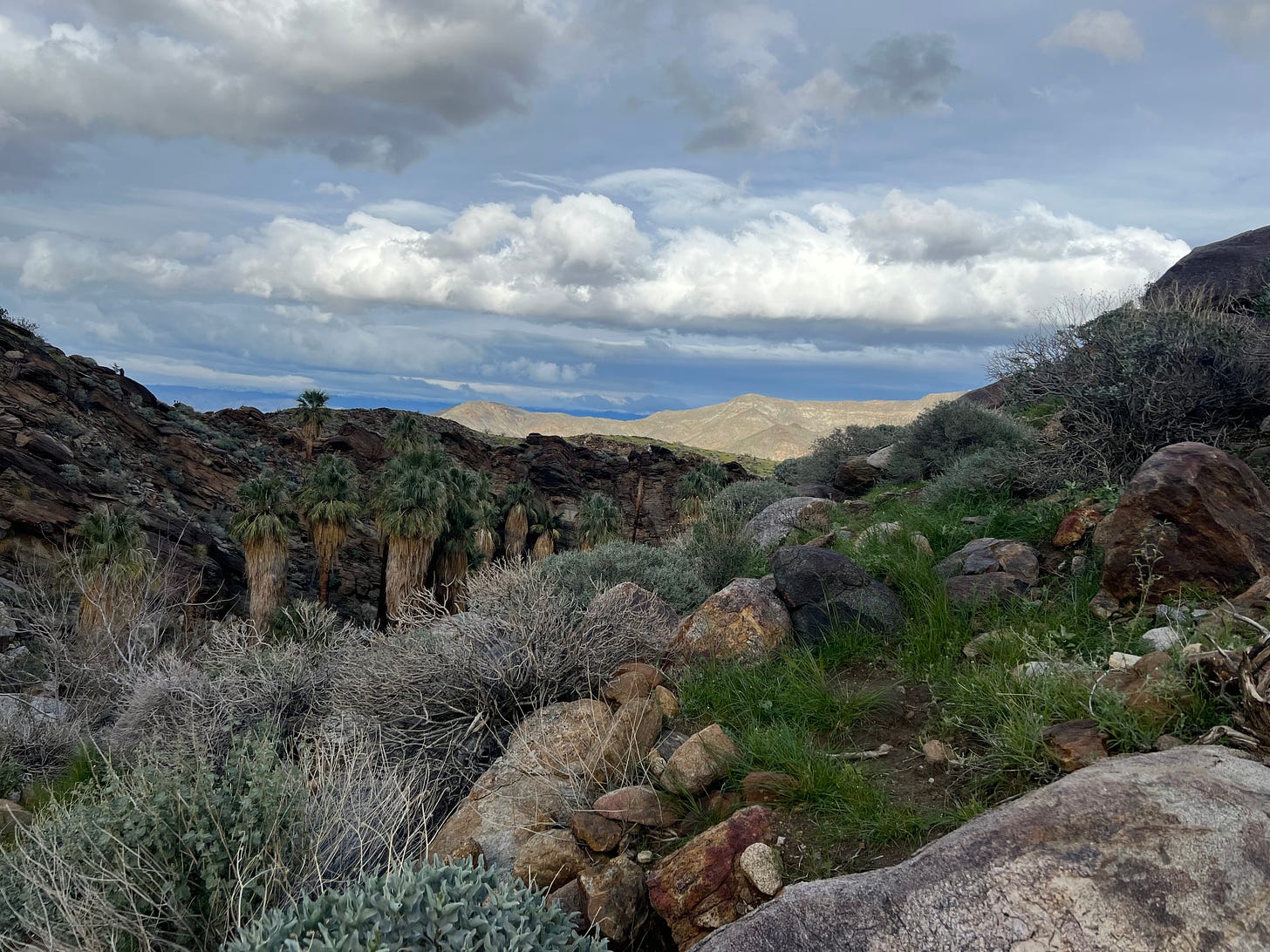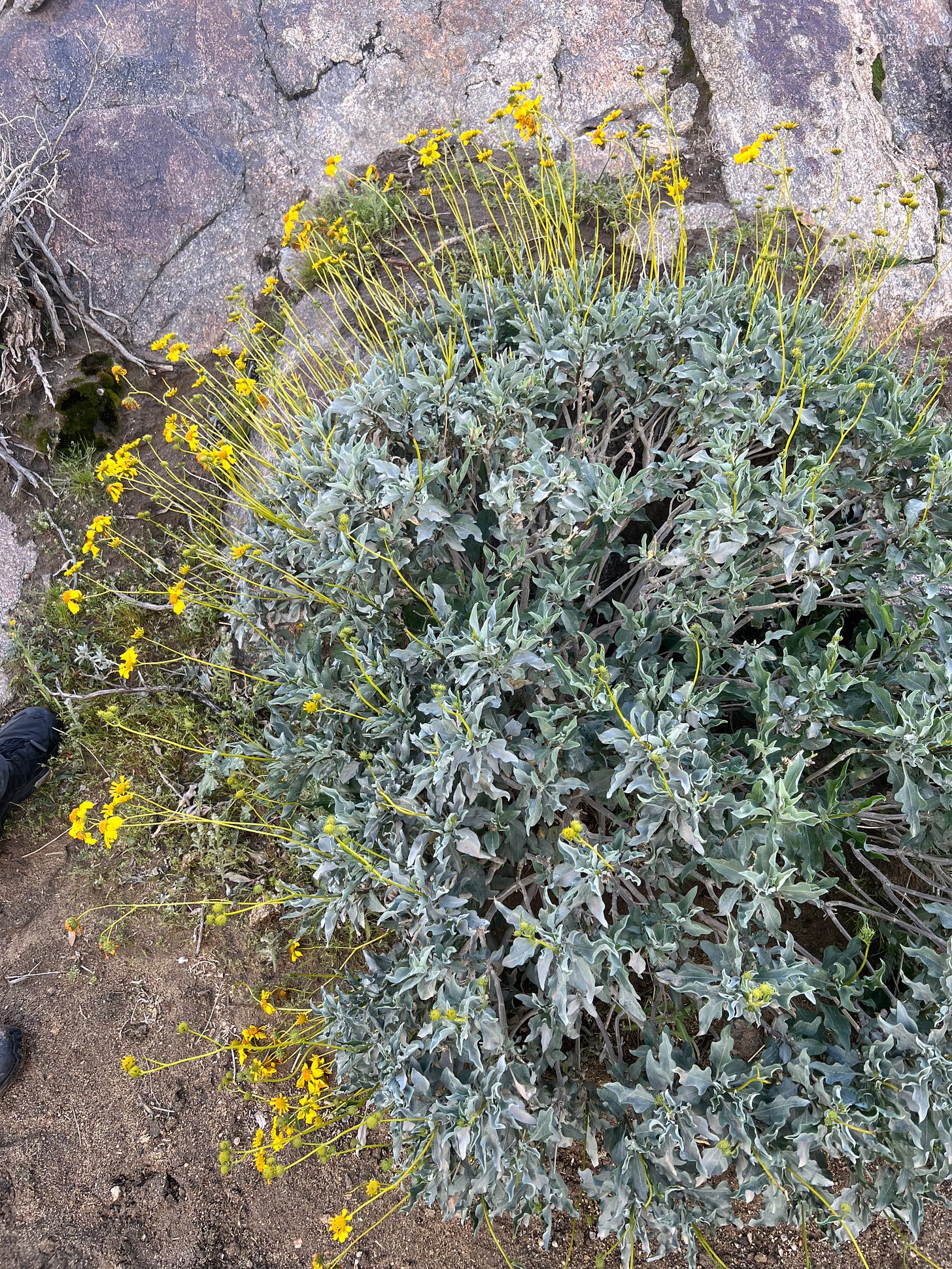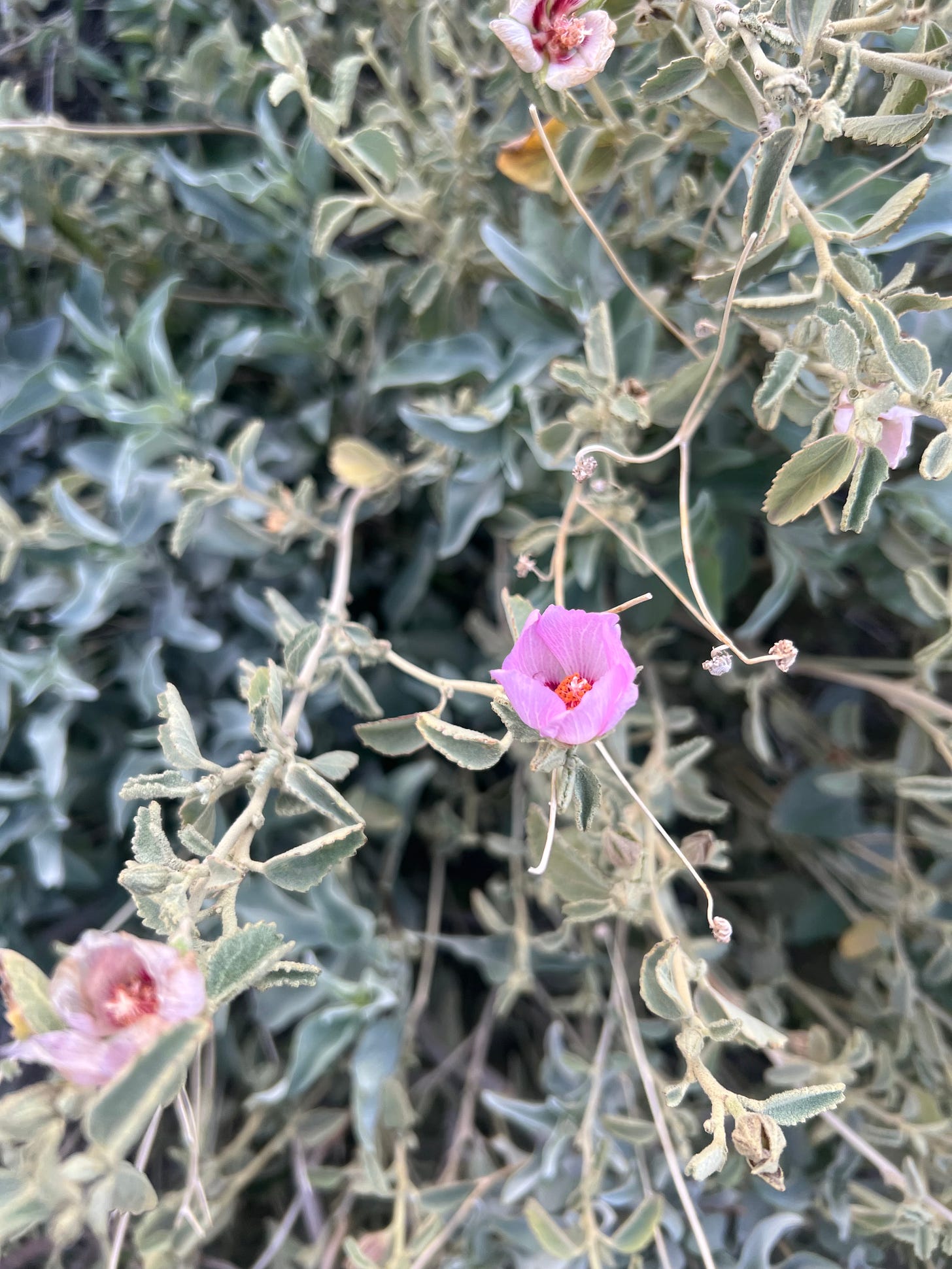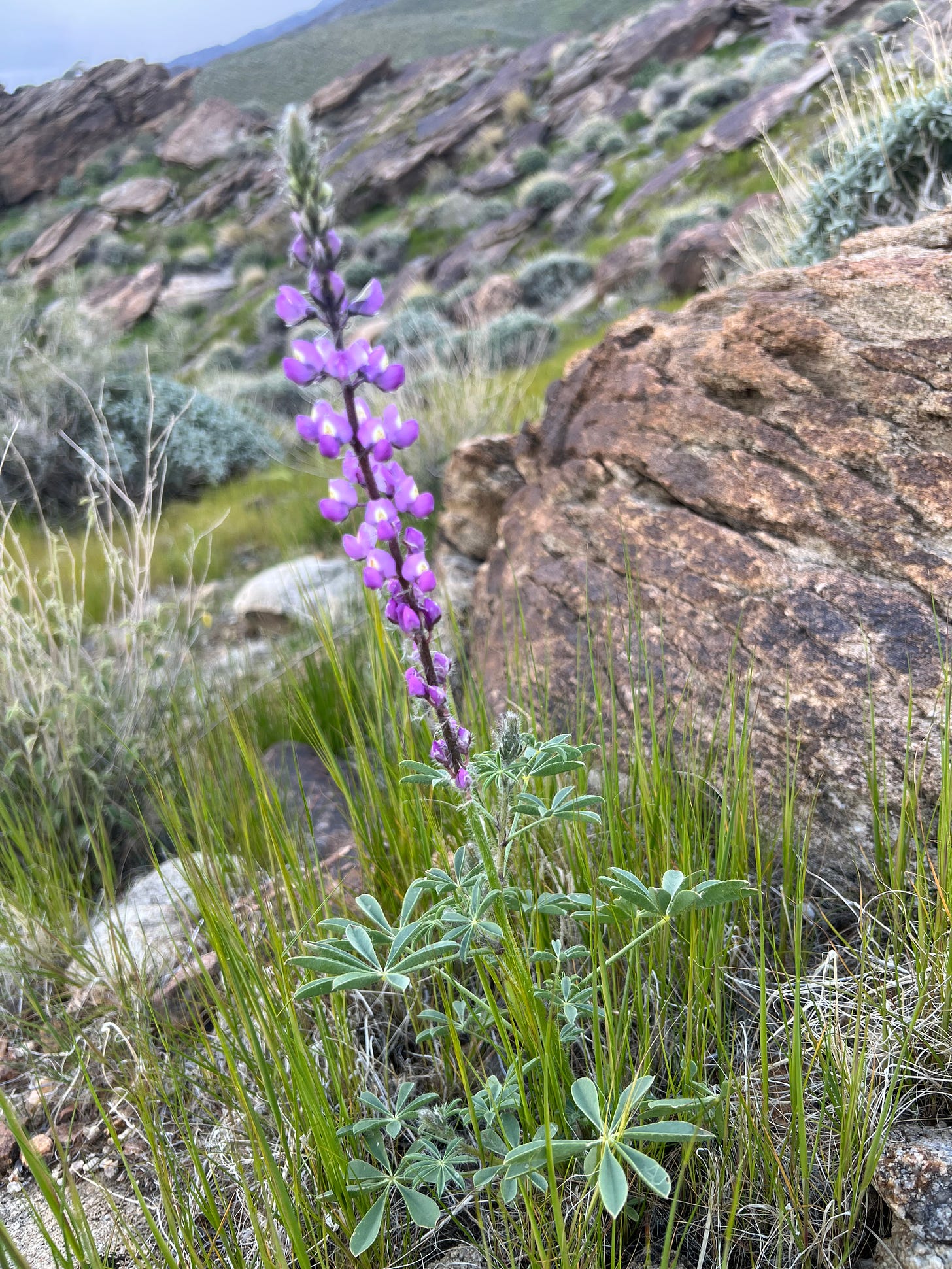A year and a half ago, I watched my father die. He’d lived a long and fruitful existence, but by the time he reached 91, a series of ailments restricted his quality of life to the point that he gave up his will to live. We arrived for an overdue visit to Florida (Covid hiatus), had some final chats, and he soon passed. Toward the very end, he had stopped eating.
One of the miracles of life on Earth, in my opinion, is the will to live. It is a powerful force—the most powerful force—present in the smallest tardigrade and the largest whale, the thinnest lichen and the thickest tree. It is so fundamental that we often ignore it. Death can remind us of it, in the way we sometimes define something by its absence, but so can other things. On a recent hike we took in the desert with friends, I saw this life force everywhere.
To the undiscerning eye, the blow desert appears almost barren, but of course it isn’t. And when one arrives in the canyons, this illusion rapidly vanishes, as the slightly cooler air and deeper shadows preserve moisture. At times, the canyons can even appear lush, and this is no illusion. Because of its diverse terrain, for example, the American Southwest has the most superlative mammal species richness on Earth when compared to any similar-sized location, and the Coachella Valley hosts the greatest number of lizard species in North America.
On our recent hike near Palm Springs, California, in the Murray Canyon on the nearby Agua Caliente Band of Cahuilla Indians Reservation, it was the plant life that had asserted itself—to startling effect.
Like people, flora and fauna manifest a remarkable will to live. Seeds can lie dormant in soil for decades, in some cases, until the proper conditions for germination arise. Damaged trees persist half dead, but only half dead. The smallest mammal or reptile fights adversity with every fiber of its being. And, occasionally, species once thought to be extinct turn up in remote places, a few individuals hanging on, managing to pass along their genes even as the genetic diversity of their species narrows down to a point.
We’ve been having some weather in the Southwest desert, as readers of the national news will know. Not the heavy downpours that recently hit Los Angeles and (with mountain blizzards thrown in) locations farther north, but an unusual amount of moisture, well distributed, accompanied by cool temperatures.
I’ve seen some debate about whether these conditions will lead to a “super bloom” this spring. While I’m not qualified to have an opinion on that, my hiking companions and I could already see the vivacity of the flora with our own eyes.
This vista incorporates a good piece of the canyon’s palette…
…rock outcroppings, a California fan palm oasis (Washingtonia filifera) by the unseen stream, brittlebush (Encelia farinosa) at the edge of the foreground, and bare hills in the background. Fresh grasses (or sedges) grow in the right portion of the photograph. We saw them in profusion, even on the valley floor.
What makes all of this green remarkable is the historic drought that has held the Southwest in its grip for many years. The mature fan palms (the only native palm in California) indicate that water has continued to reach the oasis even in dry years. Brittlebush is a tough plant, well adapted to arid conditions, so its presence is not surprising, although it probably once also grew in those dry hills. The prevalence of so much grass, however, indicates the wet winter we’ve had, seeds waiting dormant for the opportunity to sprout.
The will to live.
As climate changes, we sometimes look on in despair. Back East, I have seen trees drowned in newly soggy or newly saline soils, the latter from recent sea water infiltration. I have seen meadows die back prematurely during passing droughts that desert plants would laugh at, but they cause worry to eastern naturalists. In many cases, however, new life establishes itself—a new mix of plants more tolerant of the changed conditions. As our hike in Murray Canyon proves, even lack of water doesn’t fully kill life’s will. It can come roaring back at the first opportunity.
These are hopeful signs for the backyard steward. In southern Delaware, water birds have returned to breed just months after habitat restoration projects restored meadows that had been drained for generations. The first spring after we erected our deer fence, certain natives like sassafras, New York ironweed, and meadow primrose shot up, in some cases from places thick with invasives. In the case of the flowering primrose, a primrose moth (not seen by me in the prior decade) soon followed.
The will to live is strong. We have done so much damage to our native biomes, but as the cliché goes, where there’s life there is indeed hope. Or, as the cliché writer perhaps forgot to add, where seeds linger in the soil!
It will take more than a single wet year to restore the driest hills of the Southwest. What little topsoil they held has eroded away. But don’t bet against nature’s resilience.
Native annual cotton top (Micropus californicus) was going gangbusters along the trail:
Native brittlebush congregated on large swaths of the canyon. The flowers remind me of Helenium:
Native rock hibiscus (Hibiscus denudatus) flowered by the parking area:
As did the native annual Fremont’s pincushion (Chaenactis fremontii):
But the star of the show in our minds was a lupine I could not identify with certainty, likely the native Arizona lupine (Lupinus arizonicus):








